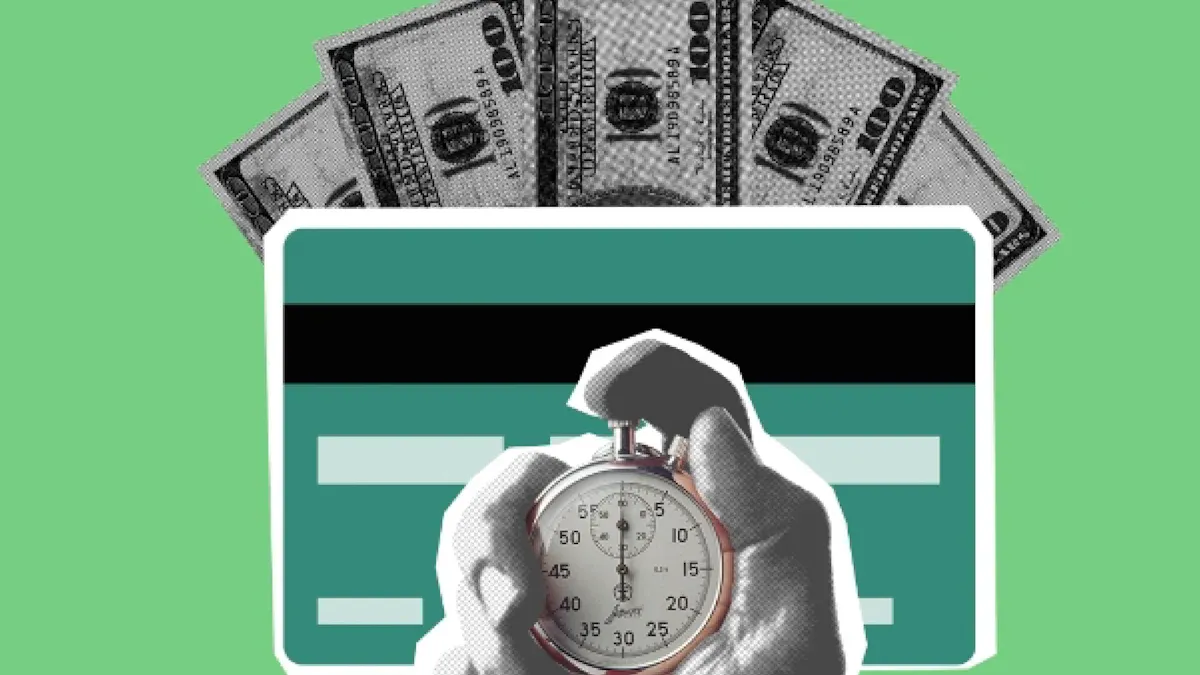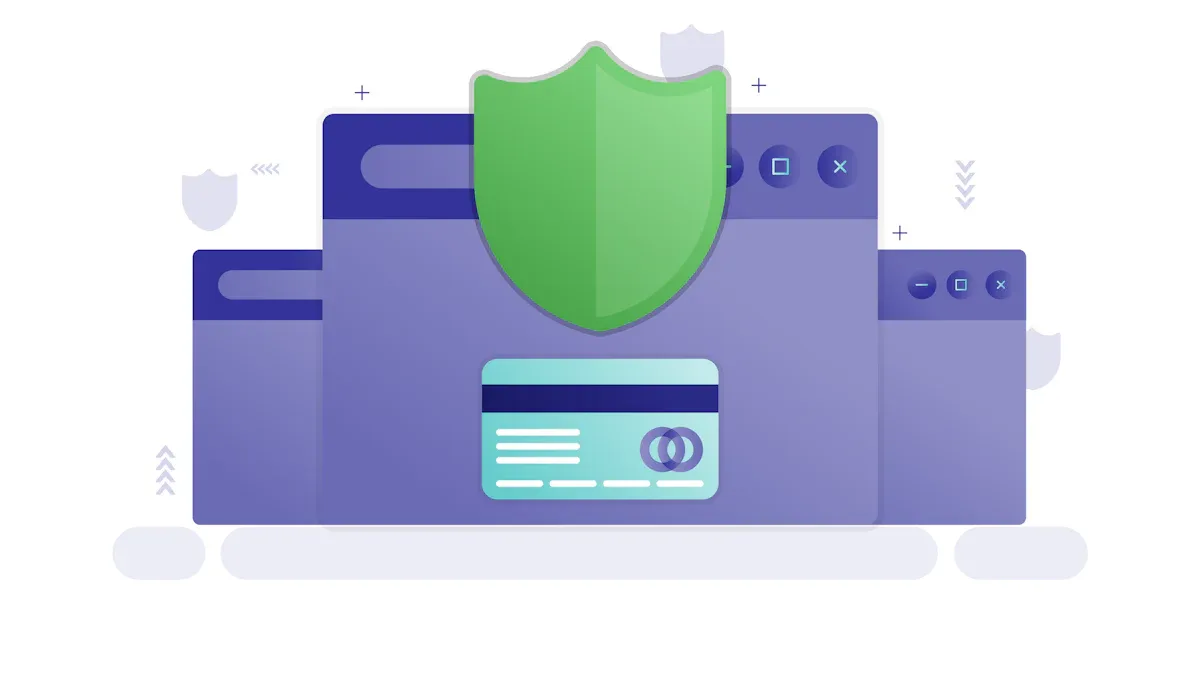- EasyCard
- Trade
- Help
- Announcement
- Academy
- SWIFT Code
- Iban Number
- Referral
- Customer Service
- Blog
- Creator
How to Make Safe and Quick Remittances Using a Capital One Credit Card to Protect Funds and Privacy

Image Source: pexels
Do you want to use a Capital One credit card for remittance? The answer is yes, but we don’t recommend doing it directly.
Banks treat direct transfers as a “cash advance.” This method is costly and carries significant risks.
A smarter, more cost-effective approach is to use platforms like PayPal or Wise. By linking your credit card to the platform’s account, you can complete safe and fast transfers. This method better protects your funds while avoiding unnecessary fees.
Key Points
- Directly using a Capital One credit card for transfers incurs high fees and interest, as it’s treated as a “cash advance.”
- A “cash advance” can harm your credit score by increasing your credit utilization ratio.
- Using third-party platforms like Wise or PayPal is safer and cheaper, avoiding the “cash advance” trap.
- When choosing a transfer platform, check if it’s regulated, has transparent fees, and robust security features.
- Linking your Capital One credit card to a third-party platform allows you to transfer money as if making a purchase, protecting your funds and privacy.
The Pitfalls of Direct Transfers: Cash Advances

Image Source: pexels
Directly using a Capital One credit card for transfers is like opening a hidden “Pandora’s box.” Banks classify this as a “cash advance,” bringing unexpected fees and risks.
What is a Cash Advance?
Simply put, a cash advance is when you directly “borrow” cash from your credit card. Capital One defines it as a way to access cash from your credit limit, distinct from purchase transactions. This means you’re using your credit card limit to withdraw cash, promising to repay it later.
Besides withdrawing cash at an ATM, you should be aware that the following transactions are also considered cash advances:
- Wire Transfers: Using a credit card for wire transfers.
- Purchasing Cash Equivalents: Such as buying foreign currency, cryptocurrency, or money orders.
- Personal Transfers: Using a credit card to send money to others via certain third-party apps (like PayPal) may also be treated as a cash advance.
- Gambling or Lottery: Purchasing lottery tickets or engaging in online gambling transactions.
High Fees and Interest
Cash advances come with very high costs. You typically face two types of fees: a transaction fee of 3%-5% of the advance amount and high interest rates.
Important Note: Unlike regular card purchases, cash advance interest starts accruing from the day of the withdrawal or transfer, with no grace period. This means your debt grows daily.
This immediate high interest rate significantly increases repayment pressure, making it a highly uneconomical transaction.
Potential Impact on Credit Score
Cash advances can also affect your credit score, primarily by increasing your “Credit Utilization Ratio,” which measures the percentage of your used credit limit against your total limit and is a key component of credit scoring.
| Credit Scoring Model | Weight of Credit Utilization |
|---|---|
| FICO Score 8 | 30% |
| VantageScore 3.0 | 20% |
Lenders prefer your credit utilization to stay below 30%. A cash advance increases your outstanding balance, and if it pushes your utilization above 30%, your credit score may drop. While timely repayments can mitigate some impact, frequent cash advances may signal financial distress to lenders, leading to negative consequences.
Achieving Safe and Fast Transfers: Third-Party Platform Solutions

Image Source: unsplash
Since the “cash advance” trap of direct credit card transfers is so evident, how can we switch to safer, more cost-effective alternatives? The answer lies in using regulated third-party transfer platforms. These platforms specialize in international transfers, helping you bypass high fees for safe and fast remittances.
How to Choose a Reliable Transfer Platform
Choosing a trustworthy platform is the first step to protecting your funds. A reliable platform isn’t just user-friendly; it must be legally compliant.
In the US, all legitimate transfer services must be regulated by financial institutions. For example, they must comply with rules set by the Financial Crimes Enforcement Network (FinCEN) and the Consumer Financial Protection Bureau (CFPB).
This ensures your funds and personal information are legally protected. When choosing, focus on these key points:
- Compliance and Regulation: First, confirm if the platform holds relevant financial licenses. For example, Wise is supervised by local regulators in the states where it operates, a hard indicator of reliability.
- Fee and Rate Transparency: The platform should clearly display all fees, including handling fees and exchange rates. Be wary of platforms claiming “zero fees” but offering poor rates.
- Security Features: Check if the platform uses encryption and two-factor authentication (2FA) to protect your account and transaction data.
- User Reviews and Reputation: Reading other users’ reviews helps you gauge the platform’s true service quality and reliability.
- Customer Support: A good platform should offer prompt customer service, enabling quick assistance when issues arise.
For example, Wise is popular for its multi-country regulation and support for transfers to Alipay, WeChat, and UnionPay cards in mainland China. If you need to send money to someone without a bank account, platforms like PayPal or Google Pay offer convenient solutions.
Operation Guide: Linking Your Account and Completing the Transfer
Using a third-party platform for safe and fast transfers is straightforward. The key is the first step: adding your Capital One credit card as a payment method to the platform’s account.
Here are the general steps:
- Choose and Register with a Platform: Select a reputable platform like Wise or PayPal based on your needs and complete account registration.
- Link Your Capital One Credit Card: This is the critical step.
Log into the platform, navigate to “Payment Methods” or “Wallet,” select “Add Credit/Debit Card,” and enter your Capital One credit card details. This step allows the platform to treat your card as a purchase payment method, cleverly avoiding the “cash advance” trap.
- Enter Transfer Information: Create a new transfer. Input the transfer amount, recipient details (e.g., name, bank account, or Alipay/WeChat account), and recipient country.
- Confirm and Complete the Transfer: On the payment page, select your newly added Capital One credit card as the payment method. The platform will clearly list fees, exchange rates, and estimated delivery times. Verify all details are correct before confirming the payment.
Comparing Key Metrics: Fees, Rates, and Speed
To better illustrate the advantages of third-party platforms, let’s compare key metrics.
| Metric | Direct Credit Card Use (Cash Advance) | Using Credit Card via Third-Party Platform |
|---|---|---|
| Fee Structure | Advance fee (typically 3%-5%) + daily high interest | Fixed, transparent service fee |
| Exchange Rate | Bank-provided rate, often with hidden markup | Mid-market exchange rate, no hidden fees |
| Speed | May be fast, depending on bank processing | Typically minutes to 1-2 business days |
| Security | Higher risk, may trigger bank risk controls | Protected by financial regulations, with encryption and fraud monitoring |
Exchange rates are the key factor determining your final cost.
Many banks and traditional transfer services add a markup to the real “mid-market rate” (the rate you see on Google) for profit. This is a hidden cost.
Platforms like Wise, however, promise to use the real mid-market rate you can find on Google, charging only a low, transparent service fee. This model ensures the fairest transaction, maximizing your transfer amount.
Comprehensive Analysis: Cost, Speed, and Security
Choosing the right transfer method is not just about fees; it’s also about delivery speed and fund security. Below, we analyze these three core dimensions to help you make the most informed decision for a truly safe and fast transfer.
Fee Structure Comparison
Fees are the most tangible cost of a transfer. Different payment methods result in significant fee variations. Paying via bank account (ACH) is typically much cheaper than using a credit card.
| Payment Method | Typical Fee Structure | Average Cost for $1,000 Payment |
|---|---|---|
| ACH Transfer | Fixed fee ($0.20 - $1.50) | $0.75 - $3 |
| Credit Card | 2.5% - 3.5% + $0.10 - $0.30 | $25 - $35 |
Credit card fees are higher because they involve multiple parties, including the card issuer, bank, and payment processor, each charging a fee. For example, with PayPal, using a credit card for personal international transfers may incur multiple fees: a 5% transaction fee (minimum $0.99, maximum $4.99), plus a 2.9% funding fee and a fixed fee (e.g., $0.30). If currency conversion is involved, additional fees may apply.
Important Reminder: While third-party platforms can avoid most “cash advance” traps, your card issuer (like Capital One) reserves the right to treat such transactions as cash advances and may charge higher interest.
Factors Affecting Delivery Speed
Transfers are not always instant. Multiple factors affect how quickly funds arrive, and you need to understand them to avoid delays in important matters.
- Bank Operating Hours and Holidays: Your transfer crosses different time zones. If the recipient country’s banks are closed or it’s a public holiday, processing will be delayed to the next business day.
- Compliance Reviews: All legitimate platforms must comply with anti-money laundering (AML) and Know Your Customer (KYC) regulations. Large or unusual transactions may trigger manual reviews, delaying the transfer by hours or days.
- Information Accuracy: Incomplete or incorrect recipient details, such as name or bank account number, can lead to transfer failure or return, prolonging the verification process.
- Intermediary Banks: Traditional bank international transfers may pass through multiple intermediary bank networks. The more links in the chain, the longer it takes for funds to reach the final destination.
Fund and Privacy Security Measures
When making cross-border transfers, the security of your funds and personal information is paramount. Reliable third-party platforms protect your assets and privacy through multiple measures.
- Strict Financial Regulation Legitimate platforms must be authorized by financial regulators. For example, Wise holds compliance licenses in the US and Europe, ensuring its operations are within legal frameworks.
Region/Entity Regulatory Body License/Registration Type Europe National Bank of Belgium Payment Institution Authorization US Financial Crimes Enforcement Network (FinCEN) Registered - Advanced Encryption Technology Platforms use SSL/TLS encryption technology to encrypt your data as you enter it, ensuring it’s not intercepted by hackers during transmission. This creates a secure encrypted channel for your information.
- Account Security Protection Two-factor authentication (2FA) adds an extra layer of security to your account. Even if your password is compromised, without the second verification (e.g., a mobile code or an authenticator app-generated code), others cannot access your account.
- Consumer Protection Mechanisms Some platforms offer fraud protection and dispute resolution. For example, PayPal provides buyer protection for eligible transactions, allowing you to file a dispute for platform investigation if issues arise.
Remember, direct credit card transfers are a costly trap. Credit cards are typically not supported for personal transfers, and choosing this method is inherently a mistake. By using compliant platforms like Wise or PayPal, you can achieve a truly safe and fast transfer.
Pre-Action Tip: Be sure to compare fees and exchange rates across platforms. Link your account and enable multi-factor authentication (MFA), a critical step in protecting your funds and privacy.
FAQ
Can I directly use my Capital One credit card to send money to family?
We don’t recommend it. Banks treat this as a “cash advance,” charging high fees and interest. You should use third-party platforms like Wise or PayPal to avoid unnecessary costs.
Is my personal information safe when transferring through third-party platforms?
Yes, reliable platforms are very safe. They are regulated by financial institutions and use multiple technologies to protect your information:
- Advanced data encryption
- Two-factor authentication (2FA) for account protection
- Strict compliance with privacy regulations
What if Capital One still treats a third-party platform transaction as a cash advance?
This is rare but possible. Before transferring, contact Capital One customer service to confirm. If you’re charged cash advance fees after the transaction, contact the bank immediately to understand the reason.
Which is better for me, Wise or PayPal?
It depends on your needs. If you want to send money directly to a recipient’s bank account or Alipay, Wise is typically better due to its transparent fees and rates. If you want to transfer to a PayPal account, PayPal is more convenient.
*This article is provided for general information purposes and does not constitute legal, tax or other professional advice from BiyaPay or its subsidiaries and its affiliates, and it is not intended as a substitute for obtaining advice from a financial advisor or any other professional.
We make no representations, warranties or warranties, express or implied, as to the accuracy, completeness or timeliness of the contents of this publication.




Contact Us
Company and Team
BiyaPay Products
Customer Services
is a broker-dealer registered with the U.S. Securities and Exchange Commission (SEC) (No.: 802-127417), member of the Financial Industry Regulatory Authority (FINRA) (CRD: 325027), member of the Securities Investor Protection Corporation (SIPC), and regulated by FINRA and SEC.
registered with the US Financial Crimes Enforcement Network (FinCEN), as a Money Services Business (MSB), registration number: 31000218637349, and regulated by FinCEN.
registered as Financial Service Provider (FSP number: FSP1007221) in New Zealand, and is a member of the Financial Dispute Resolution Scheme, a New Zealand independent dispute resolution service provider.




















